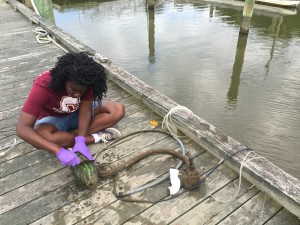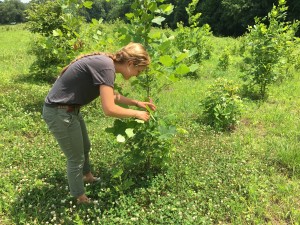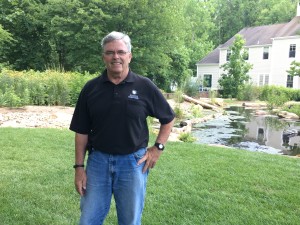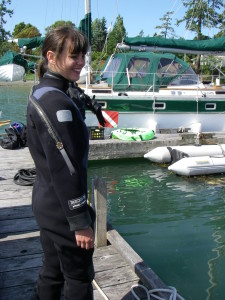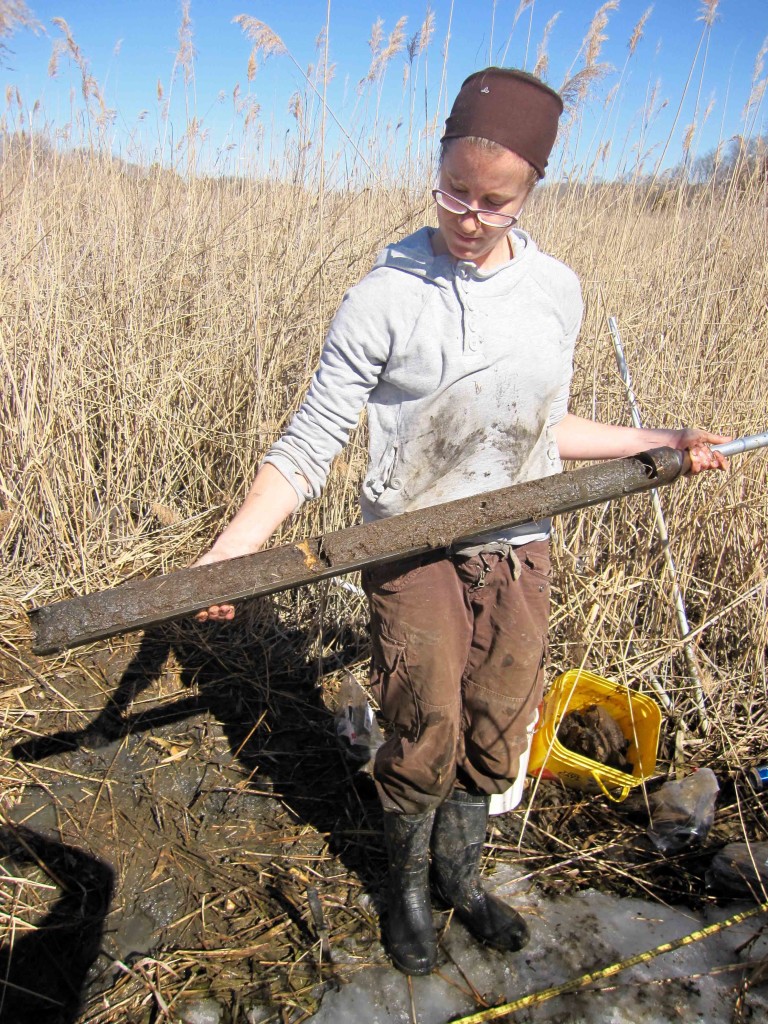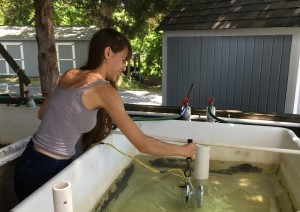
SERC intern Michelle Hauer sets up her soundscape ecology tank experiment (Photo: Emily Li/SERC)
by Emily Li
In high school, Smithsonian Environmental Research Center intern Michelle Hauer fell in love with sound. She discovered the cello, which she insisted on bringing to her internship this summer despite having limited space and housing. But her affair with sound didn’t stop there, even as she was exploring her interest in science. While still in high school, she wrote a paper on the effects of naval sonar on marine mammals. Then, while attending DePaul University, Hauer came across the relatively new field of soundscape ecology through a Chicago-based organization called Chicago Wildsounds—and she hasn’t looked back. Now, as a summer intern in SERC’s Fish and Invertebrate Ecology Lab, Hauer is studying the darker side of sound by researching how noise pollution can affect marine wildlife in the Chesapeake Bay and beyond.


